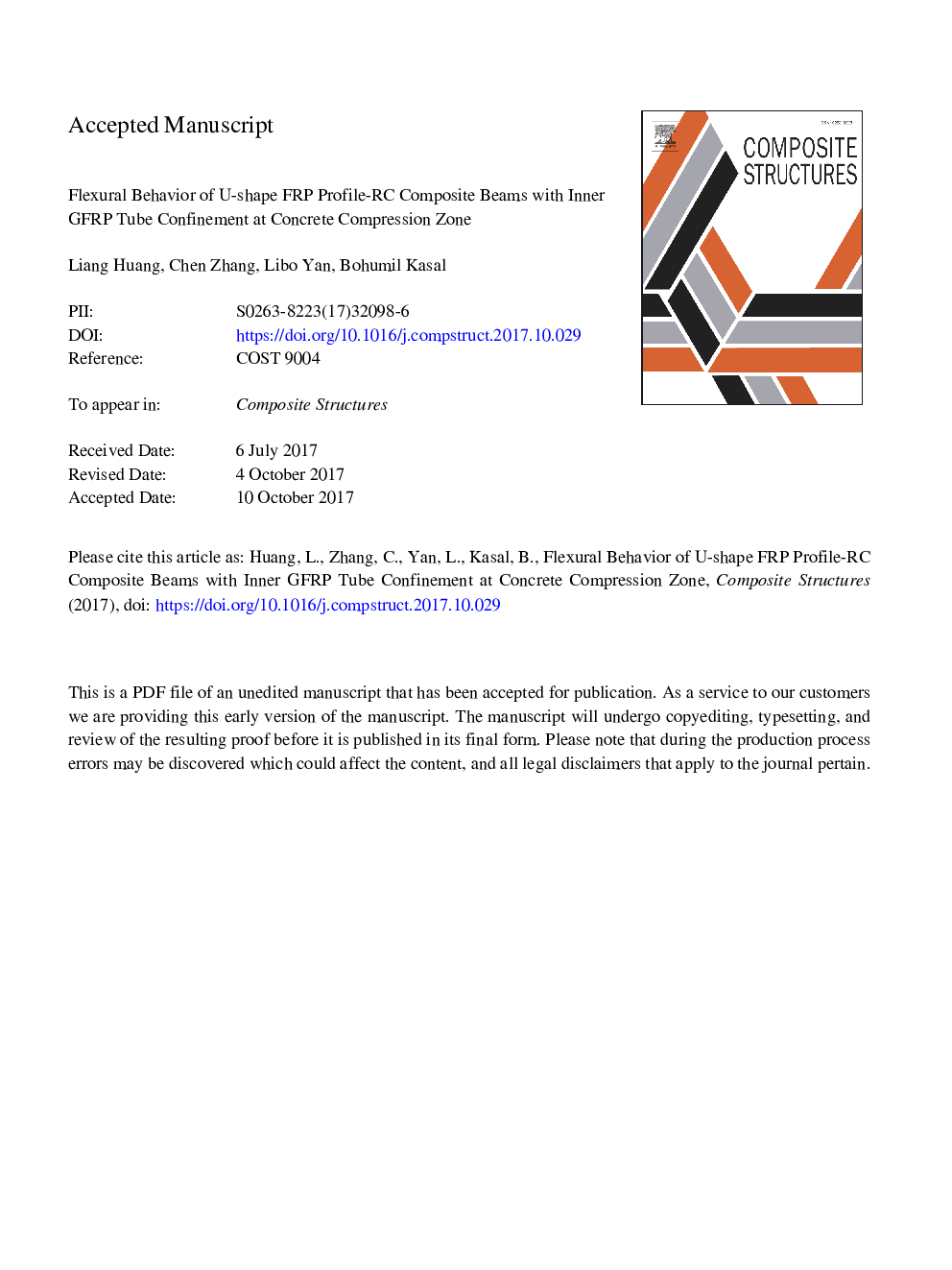| Article ID | Journal | Published Year | Pages | File Type |
|---|---|---|---|---|
| 6704847 | Composite Structures | 2018 | 28 Pages |
Abstract
This study investigated the flexural behavior of U-shape hybrid FRP-RC composite beams. The composite beams consisted of U-shape hybrid G/CFRP profile and encased rectangular RC beams with or without inner GFRP tube confinement at concrete compression zone of the beams. A total of 15 medium-sized (i.e. 1800â¯mm in length, 100â¯mm in width and 160â¯mm in depth) beam specimens were constructed and tested under four-point bending, including one ordinary RC beam as reference, 10 hybrid beams with and four hybrid beams without inner GFRP tube confinement. The examined experimental variables included: (1) different arrangements of G/CFRP layer in U-shape FRP profile, (2) inner GFRP tube, (3) conventional steel rebar, and (4) different types of FRP profile and concrete interfacial bond. Based on the testing, the failure mode, load-deflection relationship, ductility, energy absorption capacity and load-strain relationship of the beams were analyzed. The results indicated that compared with the ordinary RC beam, all hybrid FRP-RC beams experienced significant enhancement in cracking, yielding and ultimate loads. The ductility and ultimate load of the composite beams increased with an increase in the thickness of the hybrid FRP profile. The use of GFRP tube at concrete compression zone had a slight increase in the ultimate load of the hybrid beams but resulted in a pronounced enhancement of their ductility. Compared with U-shape FRP profile and concrete interface with a wet-bond type, the gravel-bond type prevented the U-shape FRP profile debonding from the RC beam effectively and in turn improved the yielding load, ultimate load and ductility of the hybrid beams. The hybrid U-shape FRP profile-concrete beams without steel rebar showed the catastrophic brittle failure indicating the necessity of using internal steel rebar for such hybrid beams.
Related Topics
Physical Sciences and Engineering
Engineering
Civil and Structural Engineering
Authors
Liang Huang, Chen Zhang, Libo Yan, Bohumil Kasal,
